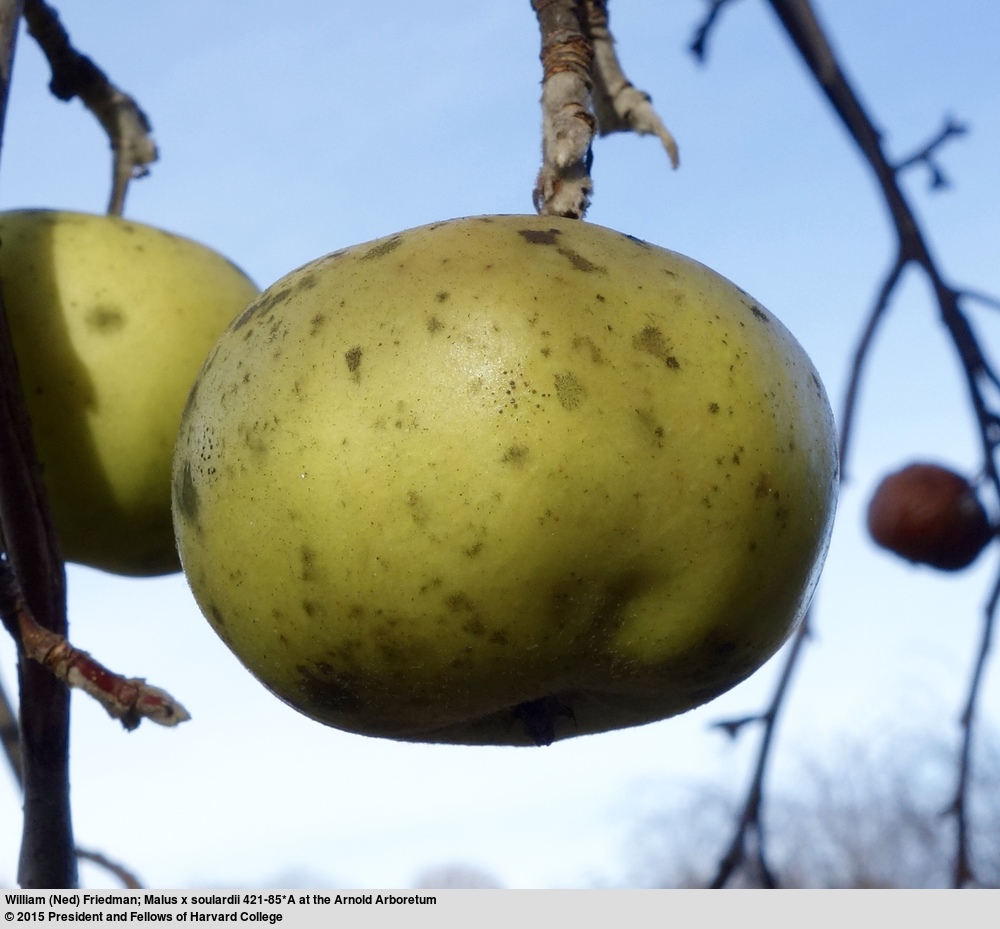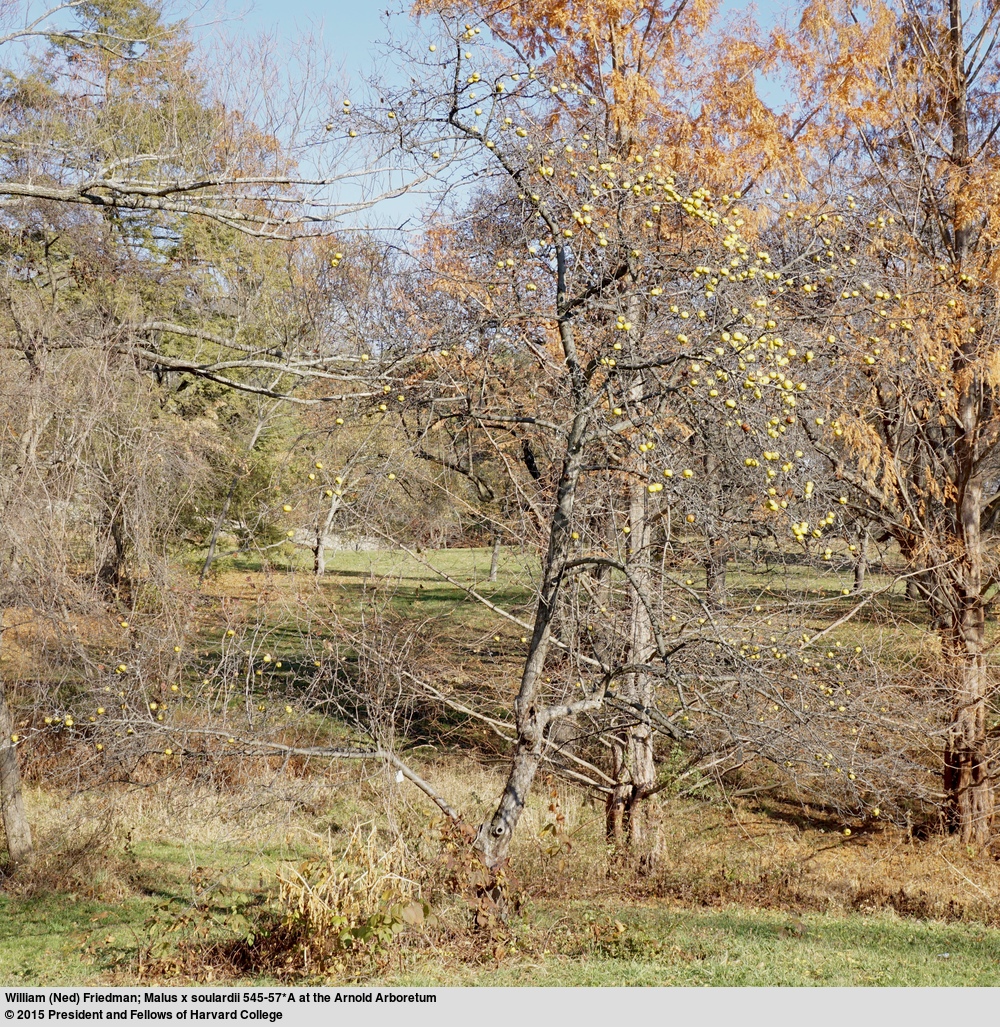Malus × soulardii
Sponsor
Kindly sponsored by
Francine: 'after many informative Tours and Study Days with the IDS I feel it only fitting to help and promote such a wonderful organisation'
Credits
Julian Sutton (species), Nick Dunn (cultivars) (2021)
Recommended citation
Sutton, J. & Dunn, N. (2021), 'Malus × soulardii' from the website Trees and Shrubs Online (treesandshrubsonline.
Other taxa in genus
- Malus × adstringens
- Malus angustifolia
- Malus × arnoldiana
- Malus asiatica
- Malus × astracanica
- Malus × atrosanguinea
- Malus baccata
- Malus bhutanica
- Malus × brevipes
- Malus chitralensis
- Malus coronaria
- Malus crescimannoi
- Malus Cultivars A-B
- Malus Cultivars C
- Malus Cultivars D-F
- Malus Cultivars G-I
- Malus Cultivars J-K
- Malus Cultivars L-M
- Malus Cultivars N-Q
- Malus Cultivars R
- Malus Cultivars S
- Malus Cultivars T-Z
- Malus dasyphylla
- Malus × dawsoniana
- Malus domestica
- Malus doumeri
- Malus florentina
- Malus × floribunda
- Malus fusca
- Malus × gloriosa
- Malus halliana
- Malus × hartwigii
- Malus × heterophylla
- Malus honanensis
- Malus hupehensis
- Malus ioensis
- Malus kansuensis
- Malus kirghisorum
- Malus komarovii
- Malus × magdeburgensis
- Malus × micromalus
- Malus × moerlandsii
- Malus montana
- Malus ombrophila
- Malus orientalis
- Malus × platycarpa
- Malus praecox
- Malus prattii
- Malus prunifolia
- Malus × purpurea
- Malus × robusta
- Malus rockii
- Malus Rootstock Cultivars
- Malus Rosybloom Cultivars
- Malus × scheideckeri
- Malus sieversii
- Malus sikkimensis
- Malus spectabilis
- Malus spontanea
- Malus × sublobata
- Malus sylvestris
- Malus toringo
- Malus transitoria
- Malus trilobata
- Malus tschonoskii
- Malus turkmenorum
- Malus yunnanensis
- Malus × zumi
A natural hybrid between North American M. ionensis and introduced M. domestica, which has been found occasionally in the Mississippi basin. Published descriptions vary considerably, and probably reflect individual clones of a variable hybrid. All seem to have light pink flowers and rather large fruit, often over 5 cm across. (Fiala 1994).
USDA Hardiness Zone 4-8
RHS Hardiness Rating H6
Conservation status Not evaluated (NE)
Introduced to American cultivation in 1868 by James Soulard of Illinois – his original clone is named ‘Soulard’ – this unremarkable crab has made very little impact. Various clones have been introduced by nurseries over the years, but all are commercially extinct (Jacobson 1996). Based on 50 years direct experience, Fiala (1994) sums it up as ‘a modestly, medium-sized tree, with heavy annual bloom and great quantities of messy fruit that falls quite early’ and explicitly does not recommend it.
Largely restricted to a few botanical collections, several specimens at the Arnold Arboretum, MA, are described as shrubs rather than trees (Arnold Arboretum 2020). In Britain, a much larger example planted in 1980 at Jodrell Bank, Cheshire had reached 12 m × 103 cm in 2015 (The Tree Register 2020).


